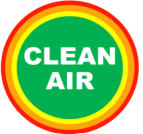
THE QUESTIONS:
What is the dune dust and
what causes it?
What are the health risks
from breathing dune
dust?
What level of dust
emission is considered
excessive?
What can Nipomo Mesa
residents do to protect
themselves?
From where is excessive
dust being emitted?
Isn’t dune dust emission a
natural phenomenon?
How do we determine
how much of the dust
emission is caused by OHV
activity versus natural
background emission?
Since the dune dust is
from sand, is there a PM10
pollution problem
elsewhere along the
California coast?
Who is responsible for
mitigating the excessive
emissions?
What mitigation measures
would be most effective?
Why not plant trees to
trap the dust and keep it
from getting into
residential areas?
Why has effective
mitigation not been done
already?
Isn’t the dust issue just a
way for opponents of the
SVRA to shut down OHV
activity on the dunes?
How will dust mitigation
effect OHV recreation on
Oceano Dunes?
Isn’t dune dust emission a natural phenomenon?
Some dust emission from coastal dunes does occur naturally, but at levels that do not threaten public health. However, the level of dune dust emissions from the off-highway vehicle riding area is many times greater than the emissions from non-riding areas. This is clearly proven by comparing monitored PM10 and PM2.5 concentrations downwind of the riding areas versus emission measurements downwind of non-riding areas.How
do
we
determine
how
much
of
the
dust
emission
is
caused
by
OHV
activity
versus natural background emission?
Various studies and monitoring programs have verified and quantified how much more dust is emitted from the SVRA riding areas compared with the non-riding areas. Both areas are similar in terrain and the winds are comparable. In the riding area, the foredunes, which tend to break the offshore wind, have disappeared due to vehicle activity. Also, significant amounts of natural vegetation have been destroyed by vehicle activity. The natural crusting of the dunes is constantly disturbed by vehicle tracks. These conditions are all known to increase dust emissions. In the non-riding areas, the foredunes and natural vegetation exist, and the natural sand crust is not disturbed. These facts point strongly to the conclusion that most, if not all, of the difference in PM emissions is caused by off-highway vehicle activity in the SVRA.Since
the
dune
dust
is
from
sand,
is
there
a
PM10
pollution
problem
elsewhere
along the California coast?
The simple answer is no . PM10 emissions do not exceed state standards anywhere on the coast of California other than from the Oceano Dunes SVRA riding areas. This has been determined through two separate surveys of Air Pollution Control Districts along the entire coast of California. No other coastal APCD experiences this phenomenon and none of them has off-highway vehicle riding on their beaches.Who is responsible for mitigating the excessive emissions?
The Off-Highway Motorized Vehicle Recreation (OHMVR) Division of the California Department of Parks and Recreation (DPR) is responsible for managing the Oceano Dunes State Vehicle Recreation Area (SVRA). Part of this responsibility is ensuring that the SVRA is operated in accordance with California environmental laws and regulations, including the State’s own PM emission standards. The OHMVR has acknowledged its responsibility for mitigating the PM pollution from its off-highway park.What mitigation measures would be most effective?
The OHMVR Division has commissioned studies of the dune dust sources and possible dust control measures. In an effort to reduce the PM emissions upwind of the monitoring station located at the Cal Fire Station on Highway 1, the OHMVR Division has deployed hay bales and wind fences to disrupt surface wind patterns. These measures have been largely ineffective. According to the Air Pollution Control District, the most effective measures would be to allow the natural foredunes and vegetation to return between the ocean and the more inland part of the riding area. This occurred in the southern part of the Oceano Dune Natural Preserve, adjacent to the off-highway vehicle park, when OHV activity was stopped to protect Snowy Plover reproduction habitat, and accounts for the significant difference in PM emissions between the protected area and the riding area.Why not plant trees to trap or filter the dust?
Trees can be effective in slowing down wind and causing turbulent air flows, which allows the heavier dust particles to precipitate from the dust plume. However, the smaller and lighter particles largely pass through and over trees. PM10 and PM2.5 pollution on the Nipomo Mesa would not be significantly reduced.Why has effective mitigation not been done already?
A primary mission of the State Parks OHMVR Division is to operate off-highway recreation areas, including the Oceano Dunes SVRA. The operation of the SVRA is also subject to State Parks’ obligation to maintain and restore the dunes environment. The Division has historically resisted implementing any dust mitigation measures that would permanently reduce the riding area. Instead, it has elected to install ineffective, temporary mitigation measures outside of the most emissive areas. In its Oceano Dunes SVRA Dust Control Program FINAL Program Environmental Impact Report (March, 2017), and in its Updated Dust Control Program Description (July, 2017), the Division describes a dust mitigation plan that would take five years to implement a series of measures that are similar to those employed unsuccessfully in the past. It has rejected a more effective alternative because it would reduce the riding area. Over the years, the OHMVR Division has consistently given preference to off-highway vehicle riding over protecting public health.
Continued…

Mesa Air Facts!




